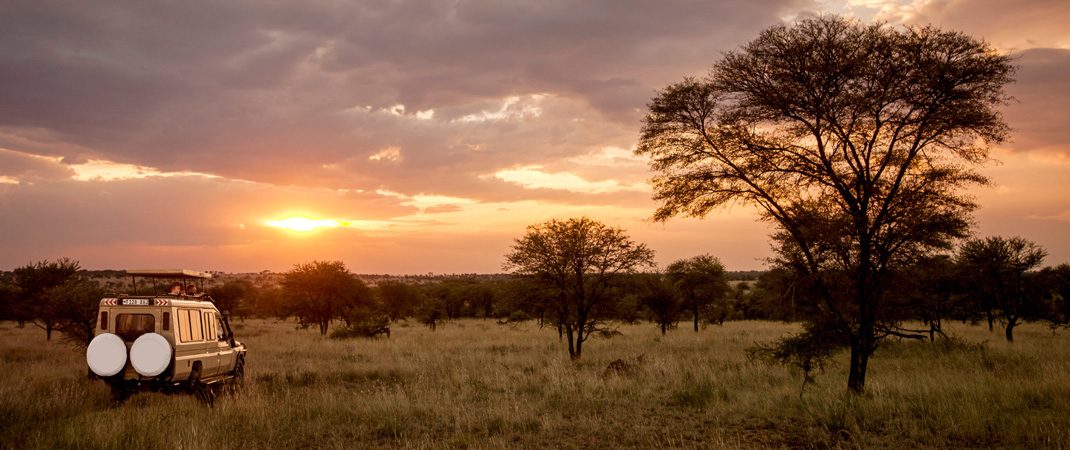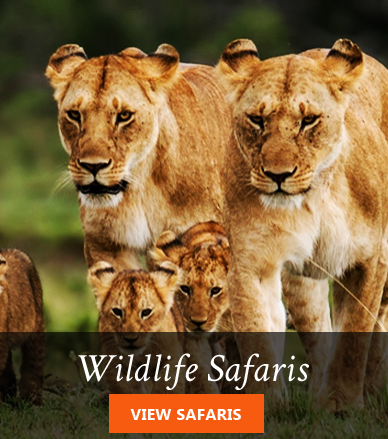Serengeti National park in Tanzania is one of the most spectacular safari destinations in Africa. It is not only splendid, but also vast and wide. And the amount of wildlife found in Serengeti National park is also mind-boggling. It is estimated that there could be over 2 million wildebeest, over 500,000 zebra, hundreds of thousands of Gazelle and tens of thousands of all sorts of antelopes. For such a vast area as the Serengeti, careful planning of a safari is important to ensure you get value for money. Wildlife concentrations are greatest between December and June, although Serengeti is a rewarding visit any time of the year. For the wildebeest migration, it is best to be around Seronera or in the south-eastern part of Serengeti from about December to end of April. The famous crossing of the Grumeti River, in the Western Corridor, takes place between May and July.
It is important to understand the Serengeti park in terms of general eco-system and wildlife. Below is a useful summary and information on the various aspects and parts of Serengeti for the purpose of planning a safari.
The Greater Serengeti
The part of Serengeti plains that is gazetted and protected as National park covers about 15,000 kilometres square. The areas is made up of rolling plains and flat grasslands punctuated with occasional kopjes. This gazetted areas is just about half of the greater serengeti eco-system, which extends southwards to include the Ngorongoro Conservation area, Loliondo Controlled Area, Grumeti Reserves, Ikorongo Reserve and Maswa Reserve, all the way into Kenya’s Masai Mara.
The Southern Serengeti Plains
This refers to the expansive area starting from the southern tip of the Serengeti National park and stretches into the north of Ngorongoro conservation area, Maswa Game reserve and south-western part of Loliondo reserve. It is mostly covered by short grass with occasional kopjes. This area is home to a good number of residents wildlife besides hosting the grazing migratory wildebeest from around late November to April.
Seronera – Southern Plains
The area just north of the short grass plains found in the southern plains, Seronera is the heart and soul of the national park. It has some of the most spectacular features of this great park; high density of the resident game – both predators and herbivores, great scenery – open plains and lines of rolling hills, plus the great migration that passes through the Seronera area around April and May.
However, Seronera part of the Serengeti may not be your perfect dream destination. This is due to the high number of visitors. Its proximity makes is easily accessible from both the southern plains and the western corridor, turning it into a base for viewing the migration between around November and June.
The Western Corridor of Serengeti
Stretching to the west, almost to Lake Victoria, the Serengeti narrows into what’s known as the Western Corridor. The key feature of this area is the two rivers, the Grumeti and the Mbalageti, which run almost parallel, each supporting a band of most, evergreen riparian forest. This area sustains a very good permanent game population, including plenty of zebra and wildebeest, all the predators and forest ‘specialists’ like colobus monkeys. The bird life is particularly varied. The migration passes through between about May and July – pausing to gather momentum before crossing the crocodile-rich waters of the Grumeti River, into the Grumeti Reserve.
The western corridor part of Serengeti refers to the western side, running almost to the shores of Lake Victoria. The 2 rivers, Grumeti and Mbalageti are the main features of this area. The rivers run parallel to each other, in the process creating an evergreen riparian forest that supports a good number of animals – both predators and herbivores. The migration goes through the western corridor between May and July.
The Northern Serengeti
Northern Serengeti is the stretch that starts from Seronera area all the way to the Kenyan border with Tanzania. It is area area of gentle rolling plains criss-crossed by small rivers and some hills and kopjes. Being far from the parks gate in the south, this part of serengeti receives quite a few number of visitors therefore provides thrilling safari experiences.
In fact, the more one moves northwards, the fewer the visitors, and the fewer the safari vehicles one encounters. To the extend that even during the migration months in northern Serengeti, August to October, the viewing of the river crossing remains enjoyable and spectacular as it should be. Serengeti north is the only part of the national park where off-road driving is allowed.
The Grumeti Reserves
Singita Grumeti Reserves is a private reserve covering about 1500 square kilometres along the northern side of the western corrider. It offers un-matched luxury in accommodation and is without peers in terms of watching the great migration as the animals pass on their way to Masai Mara. Money made from visitors stay within the Grumeti Reserves mostly stays to support the local community and help conserve the nature within.
Safari Trips to the Serengeti
With such a vast area and different regions available to visitors, a safari trip to Serengeti can easily turn out to be a disappointment if not planned well. Proper timing and careful selection of the place to stay and when to travel are very important considerations. Before you decide to take a fly-in trip to Serengeti or to take a private safari vehicle, one needs to talk to safari experts.




Leave a Reply